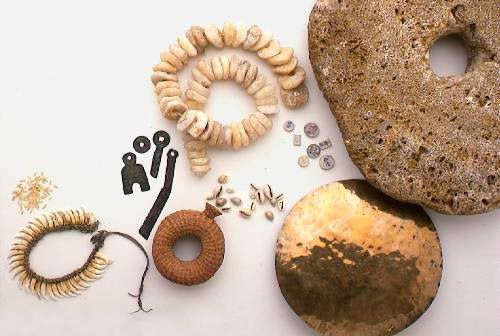
Before coins and paper bills, people used all kinds of strange things to trade for goods and services. Over time, humans have used some very unusual objects as currency—things that may surprise you.
Imagine paying for your food with giant stones or using salt to buy clothes. Some ancient societies even used cows, tea, and even human skulls as money! These objects had value in their cultures, just like how we use money today.
While modern currencies are made of paper and metal, history shows us that anything can be valuable if people agree on its worth.
Here’s a look at five of the weirdest things humans have ever used as currency.
1. Giant stone money
In the tiny island of Yap, located in the Pacific Ocean, people once used huge stone discs called Rai as money. Some of these stones were so big that they couldn’t be moved easily! Instead of carrying them around, people just remembered who owned which stone. If someone "paid" for something, the ownership of the stone changed, but the stone itself stayed in the same place.
Even though they are no longer used as everyday money, they are still valuable to the people of Yap.
2. Tea bricks
Before paper money became common, people in China, Mongolia, Tibet, and Russia used compressed tea leaves as currency. These were called tea bricks because they were shaped like small bricks and could be broken into smaller pieces for smaller transactions.
Since tea was highly valued, it became a practical form of money. People could either spend it or drink it! Soldiers, traders, and even government officials used tea bricks for hundreds of years before coins and banknotes became popular.
ALSO READ: A trip down memory lane: Timeline of currency in Nigeria
3. Salt
In Ancient Rome, soldiers were sometimes paid in salt, which was valuable because it was used to preserve food before refrigeration existed.
In parts of Africa, salt was so important that it was traded just like gold. People even built entire trade routes to transport large blocks of salt across the continent. Today, salt is cheap and easy to find, but in the past, it was one of the most valuable things a person could own.
4. Cows
In several ancient cultures, cows were a form of wealth. In places like India, Africa, and Europe, people traded cattle as a way to buy land, pay debts, or even arrange marriages.
Cows were useful because they provided milk, meat, and labour for farming. In some African communities, the more cows a person owned, the wealthier they were considered. Even today, some cultures still value cows as a symbol of prosperity.
5. Squirrel pelts
In Medieval Russia, squirrel pelts (fur) were used as money. Since the region was very cold, warm fur was extremely valuable. People used squirrel skins to trade for food, clothes, and tools. In some areas, the demand was so high that people even used squirrel claws and ears as small change.
This unusual currency lasted for centuries before the Russian government introduced coins. But for a long time, if you lived in old Russia, your wallet might have been full of squirrel fur instead of money.
Today, we use digital payments, credit cards, and banknotes, but who knows what the future holds?
Maybe one day, people will look back and find our money just as strange as we find these ancient currencies!
ALSO READ: 10 most valuable currencies in the world